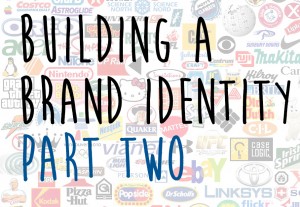Brand Identity: Part Two
In Part One we talked about the concepts behind developing a brand identity and the pieces and parts that make up the process. In Part Two, I’ll be delving into vision and mission statements. But first, let’s answer the why, because I want to be clear that the development of a vision and mission statement shouldn’t be optional, an add-on activity or an afterthought.  Vision and mission statements are more than just a list of goals. Not having these equates to doing your employees a disservice—a clear mission and vision strengthens company culture, improves relationships across divisions (shared priorities = more harmony) and makes decision making easier. When you know who you are, what you value and where you’re going, it’s a lot easier to get excited about the process. Here’s the breakdown.
Vision and mission statements are more than just a list of goals. Not having these equates to doing your employees a disservice—a clear mission and vision strengthens company culture, improves relationships across divisions (shared priorities = more harmony) and makes decision making easier. When you know who you are, what you value and where you’re going, it’s a lot easier to get excited about the process. Here’s the breakdown.
Vision Statements
The vision statement defines what we want our future company to look like. It’s the north star of statements.
Examples:
- Save the Children: Our vision is a world in which every child attains the right to survival, protection, development and participation.
- Toyota: Toyota will lead the way to the future of mobility, enriching lives around the world with the safest and most responsible ways of moving people…
- Creative Commons: Our vision is nothing less than realizing the full potential of the Internet — universal access to research and education, full participation in culture — to drive a new era of development, growth, and productivity.
Non-profits tend to be pretty good at creating vision statements. Take a look.
Mission Statements
While a vision statement focuses on where we’re going, a mission statement defines the purpose of our organization. Effective mission statements should, at a minimum, tell us what the company does, for whom it does those things and how they do it. Most mission statements are terrible. That’s not me being cynical. What they do say is generic business-speak that means pretty much nothing to real people. Want your employees to actually live the statement? Don’t make a dreadful statement. How can you avoid doing something dreadful? Leave out words like: synergy, empower, value-add, best-in-class and integrity. Stop spinning. Stop self-promotion. Stop the marcom speak. What’s your company’s purpose? What do you do and how do you do it? What value do you bring? To whom? State it clearly.
Examples
- State Farm: State Farm’s mission is to help people manage the risks of everyday life, recover from the unexpected, and realize their dreams.
- CVS Corporation: We will be the easiest pharmacy retailer for customers to use.
- Disney: We create happiness by providing the finest in entertainment for people of all ages, everywhere.
What’s the unifying theme of the mission statements above? All are outward-facing. Do the statements include the “what we do?” Yes, but in a roundabout way – the focus is on the customer. Let’s replicate that.
Learn from the Masters (and from the fools)
While the creation of a vision and mission statement is an inherently internal activity, by looking at how others have succeeded and failed you can pull some do’s and do not’s into your process. Let’s recap what we’ve learned:
- Consider why – The mission and vision statements aren’t just for you; they’re for your employees.
- Don’t be terrible – Avoid jargon, fluff and language that results in a collective dry heaving.
- Look outward – It’s great that you do what you do but for whom do you do it?
- Find inspiration – Look at Fortune 500s, look at Best Of lists and non-profits. Which ones have mission and vision statements that speak to you?
And if you’re looking to up the ante, read William Blake, who penned what may be the best vision statement… ever:
To see a world in a grain of sand
And a heaven in a wild flower,
Hold infinity in the palm of your hand,
And eternity in an hour.
Sara Fraser – VP Content Strategy



